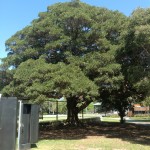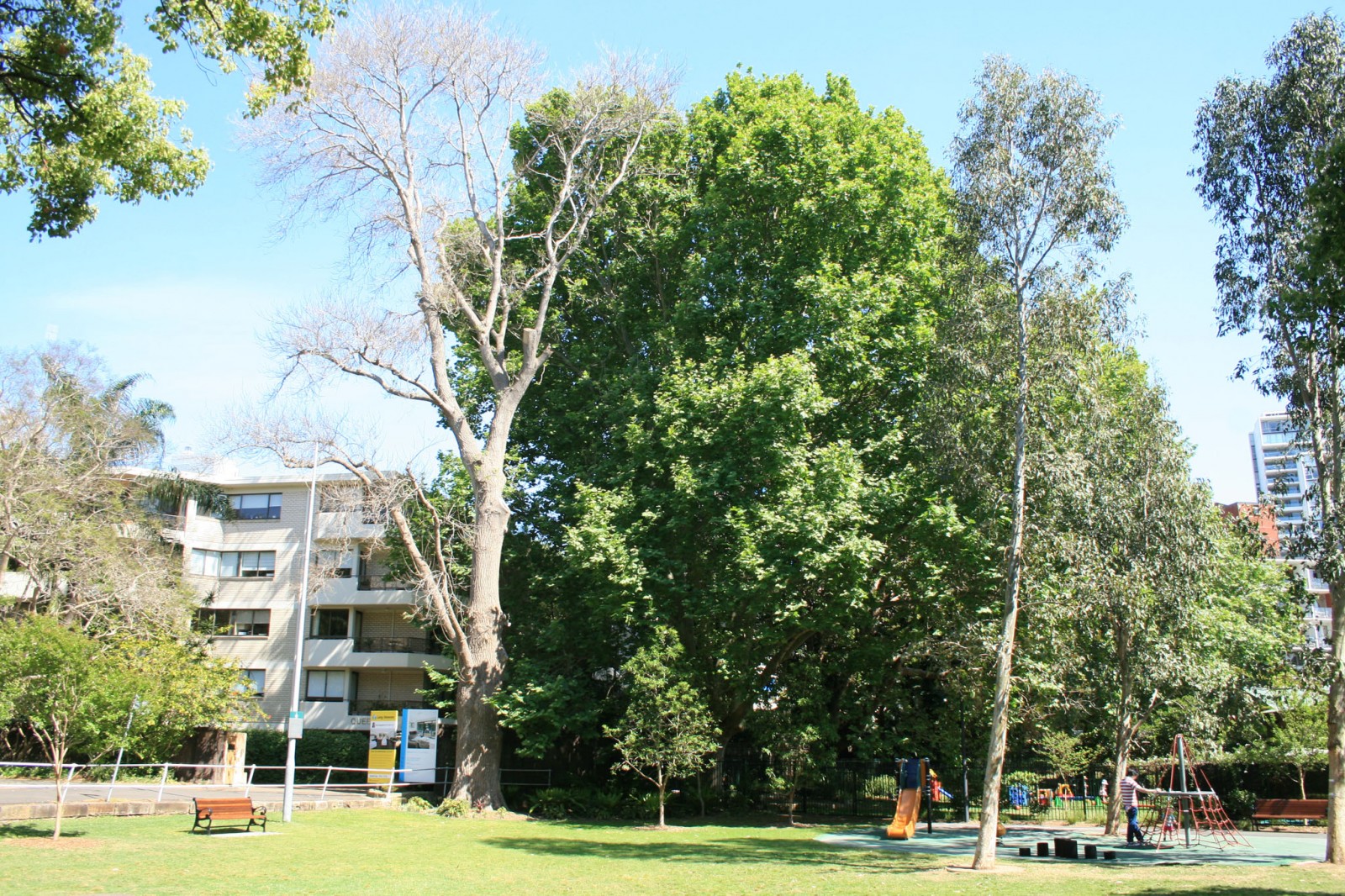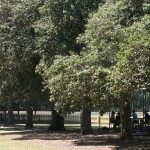Description
The Reg Bartley Oval, located adjacent to Rushcutters Bay, is part of a larger parcel of contiguous open space which includes parkland east of the canal, known as Rushcutters Bay Park (under the management of Woollahra Council). The park, including the oval, grandstand and landscaping is scheduled in the City of Sydney Local Environmental Plan 2012. Waratah Street runs through the south-western edge of the public parkland. The land west of Waratah Street includes Rushcutters Bay Kindergarten, tennis courts and a small reserve adjacent to Queens Avenue.
The park contains an outstanding collection of trees, many of which have significance as individual specimens including a London Plane (Platanus x acerifolia) near the rear boundary of the Kindergarten, an American Cottonwood (Populus deltoides) in the adjoining reserve, a very large specimen River Red Gum (Eucalyptus camaldulensis), Small-leaved Fig (Ficus obliqua), Queensland Kauri Pine (Agathis robusta) and Blackbean (Castanospermum australe). One of the Moreton Bay Figs (Ficus macrophylla) in the north-eastern corner of the park is a particularly outstanding specimen with an expansive low-branching pattern (28 metres in diameter).
Significance
This late Victorian era and early twentieth century collection has important associations with the Botanic Gardens. Furthermore, these significant trees provide high visual, amenity and biodiversity values in this urban foreshore setting. It is scheduled in the City of Sydney Local Environmental Plan 2012. The collection is considered to have group significance at the City/ LGA level in terms of its visual, historic, and botanical values. Many of these trees are native rainforest species and they continue an important thematic style throughout this precinct and the City of Sydney LGA.
Historical notes
The Oval was named in 1959 in recognition of Reg Bartley’s 18 years as alderman and five as Lord Mayor. The fill on which the Oval was built was the foundations of the old Sydney General Post Office which was demolished in the 1860s. The Oval was completed and fenced by 1889. (http://www.dunbarrovers.com/news/news_read.asp?ID=1918# Accessed 24.9.12) The larger figs in the park would appear to date from the earliest period of the parks development as they are easily distinguished as large specimens in 1920’s and 1943 aerial photos. The Norfolk Island Hibiscus (Lagurnaria patersonii) to the east of the tennis courts and the Plane Trees and other plantings associated with the Kindergarten area and western part of the park probably dating from around circa 1930’s. The other scattered trees including the Black Bean, the American Cottonwoods and the Kauri Pine appear to be the result of late 1940’s to 1960’s overlays.






























